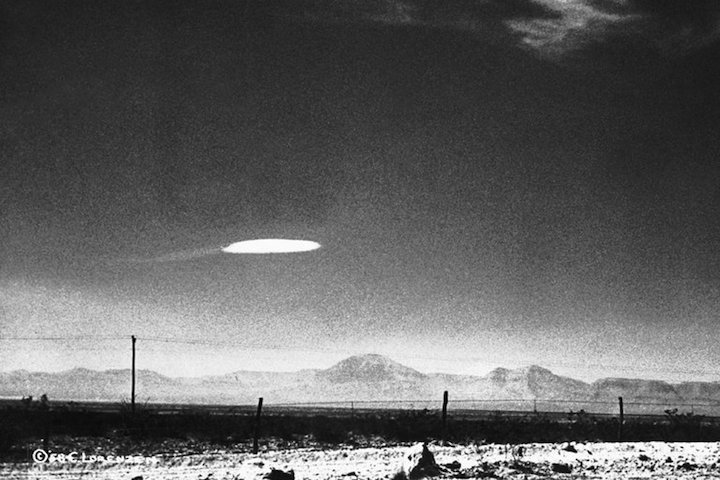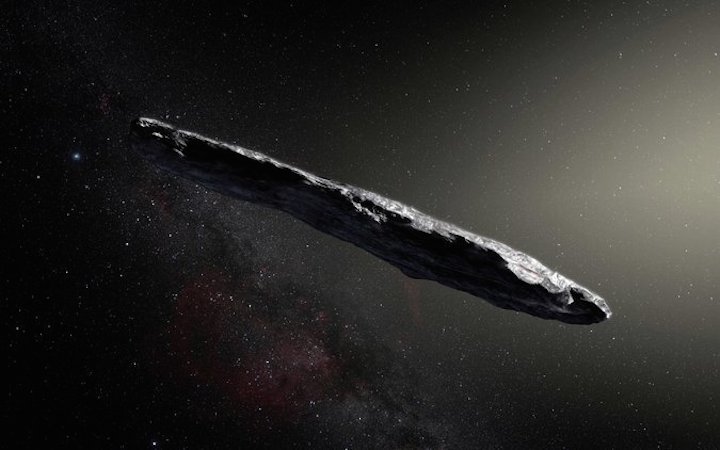30.12.2017
Weiteren Background zur F-18-FLIR-Video-Aufnahme der NYT-Story von NYT selbst, rudert man da ein wenig zurück und kommt auf den Boden der Tatsachen?:
...
NYT: GIMBAL Video of U.S. Navy Jet Encounter with Unknown Object
----
U.F.O.s: Is This All There Is?

Hey, Mr. Spaceman,
Won’t you please take me along?
I won’t do anything wrong.
Hey, Mr. Spaceman,
Won’t you please take me along for a ride?
So sang the Byrds in 1966, after strange radio bursts from distant galaxies called quasars had excited people about the possibility of extraterrestrial intelligence.
I recalled those words recently when reading the account of a pair of Navy pilots who were outmaneuvered and outrun by a U.F.O. off the coast of San Diego back in 2004. Cmdr. David Fravor said later that he had no idea what he had seen.
“But,” he added, “I want to fly one.”
His story was part of a bundle of material released recently about a supersecret $22 million Pentagon project called the Advanced Aerospace Threat Identification Program, aimed at investigating U.F.O.s. The project was officially killed in 2012, but now it’s being resurrected as a nonprofit organization.
Disgruntled that the government wasn’t taking the possibility of alien visitors seriously, a group of former defense officials, aerospace engineers and other space fans have set up their own group, To the Stars Academy of Arts & Science. One of its founders is Tom DeLonge, a former punk musician, record producer and entrepreneur, who is also the head of the group’s entertainment division.
For a minimum of $200, you can join and help finance their research into how U.F.O.s do whatever it is they do, as well as telepathy and “a point-to-point transportation craft that will erase the current travel limits of distance and time” by using a drive that “alters the space-time metric” — that is, a warp drive going faster than the speed of light, Einstein’s old cosmic speed limit.
“We believe there are transformative discoveries within our reach that will revolutionize the human experience, but they can only be accomplished through the unrestricted support of breakthrough research, discovery and innovation,” says the group’s website

I’m not holding my breath waiting for progress on telepathy or warp drive, but I agree with at least one thing that one official with the group said. That was Steve Justice, a former engineer at Lockheed Martin’s famous Skunk Works, where advanced aircraft like the SR-71 high-altitude super-fast spy plane were designed.
“How dare we think that the physics we have today is all that there is,” he said in an interview published recently in HuffPost.
I could hardly agree more, having spent my professional life in the company of physicists and astronomers trying to poke out of the cocoon of present knowledge into the unknown, to overturn Einstein and what passes for contemporary science. Lately, they haven’t gotten anywhere.
The last time physicists had to deal with faster-than-light travel was six years ago, when a group of Italy-based physicists announced that they had seen the subatomic particles known as neutrinos going faster than light. It turned out they had wired up their equipment wrong.
So far Einstein is still the champ. But surely there is so much more to learn. A lot of surprises lie ahead, but many of the most popular ideas on how to transcend Einstein and his peers are on the verge of being ruled out. Transforming science is harder than it looks.
While there is a lot we don’t know, there is also a lot we do know. We know how to turn on our computers and let gadgets in our pocket navigate the world. We know that when physical objects zig and zag through a medium like air, as U.F.O.s are said to do, they produce turbulence and shock waves. NASA engineers predicted to the minute when the Cassini spacecraft would dwindle to a wisp of smoke in Saturn’s atmosphere last fall.
In moments like this, I take comfort in what the great Russian physicist and cosmologist Yakov Zeldovich, one of the fathers of the Soviet hydrogen bomb, once told me. “What science has already taken, it will not give back,” he said.
Scientists are not the killjoys in all this.
In the astronomical world, the border between science fact and science fiction can be very permeable, perhaps because many scientists grew up reading science fiction. And astronomers forever have their noses pressed up against the window of the unknown. They want to believe more than anybody, and I count myself among them.

But they are also trained to look at nature with ruthless rigor and skepticism. For astronomers, the biggest problem with E.T. is not the occasional claim of a mysterious light in the sky, but the fact that we are not constantly overwhelmed with them.
Half a century ago, the legendary physicist Enrico Fermi concluded from a simple back-of-the-envelope calculation that even without warp drive, a single civilization could visit and colonize all the planets in the galaxy in a fraction of the 10-billion-year age of the Milky Way.
Proponents of SETI, the search for extraterrestrial intelligence, have been debating ever since. One answer I like is the “zoo hypothesis,” according to which we have been placed off-limits, a cosmic wildlife refuge.
Another answer came from Jill Tarter, formerly the director of research at the SETI Institute in Mountain View, Calif. “We haven’t looked hard enough,” she said when I asked her recently.
If there was an iPhone sitting under a rock on the Moon or Mars, for example, we would not have found it yet. Our own latest ideas for interstellar exploration involve launching probes the size of postage stamps to Alpha Centauri.
In the next generation, they might be the size of mosquitoes. By contrast, the dreams of some U.F.O. enthusiasts are stuck in 1950s technology.
Still, we keep trying.
Last fall when a strange object — an interstellar asteroid now named Oumuamua — was found cruising through the solar system, astronomers’ thoughts raced to the Arthur C. Clarke novel “Rendezvous With Rama,” in which the object was an alien spaceship. Two groups have been monitoring Oumuamua for alien radio signals, so far to no avail.
Meanwhile, some astronomers have speculated that the erratic dimming of a star known as “Boyajian’s star” or “Tabby’s star,” after the astronomer Tabetha Boyajian, could be caused by some gigantic construction project orbiting the star. So far that has not worked out, but none of the other explanations — dust or a fleet of comets — have, either.
A pair of Harvard astronomers suggested last spring that mysterious sporadic flashes of energy known as fast radio bursts coming from far far away are alien transmitters powering interstellar spacecraft carrying light sails. “Science isn’t a matter of belief, it’s a matter of evidence,” the astronomer Avi Loeb said in a news release from Harvard. “Deciding what’s likely ahead of time limits the possibilities. It’s worth putting ideas out there and letting the data be the judge.”
U.F.O. investigations are nothing new. The most famous was the Air Force’s Project Blue Book, which ran from 1952 to 1970 and examined more than 12,000 sightings.
Most U.F.O. sightings turn out to be swamp gas and other atmospheric anomalies, Venus, weird reflections or just plain hoaxes. But there is a stubborn residue, a few percent that resist easy explication, including now Commander Fravor’s story. But that’s a far cry from proving they are alien or interstellar.
I don’t know what to think about these stories, often told by sober, respected and professional observers — police officers, pilots, military officials — in indelible detail. I always wish I could have been there to see it for myself.
Then I wonder how much good it would do to see it anyway.
Recently I ran into my friend Mark Mitton, a professional magician, in a restaurant. He came over to the table and started doing tricks. At one point he fanned the card deck, asked my daughter to pick one, and then asked her to shuffle the deck, which she did expertly.
Mr. Mitton grabbed the deck and sprayed the cards in the air. There was my daughter’s card stuck to a mirror about five feet away. How did it get there? Not by any new physics. Seeing didn’t really help.
As modern psychology and neuroscience have established, the senses are an unreliable portal to reality, whatever that is.
Something might be happening, but we don’t know what it is. E.T., if you’re reading this, I’m still waiting to take my ride.
Quelle: New York Times
